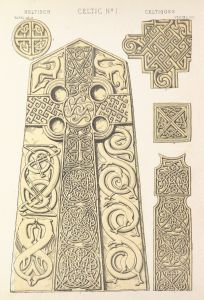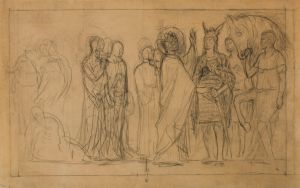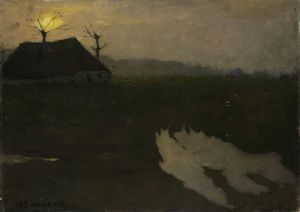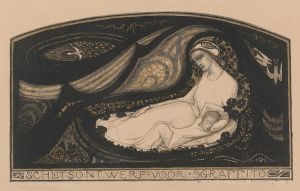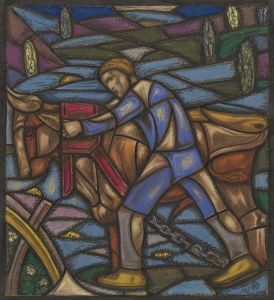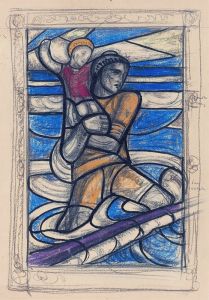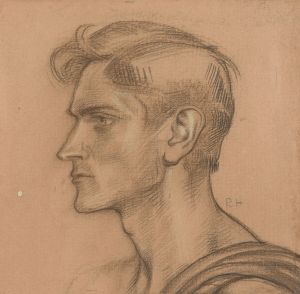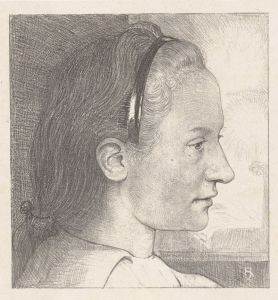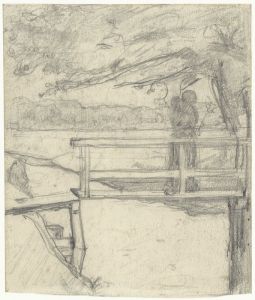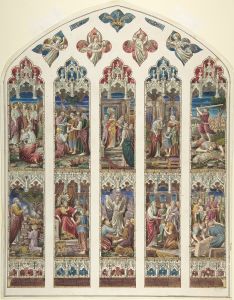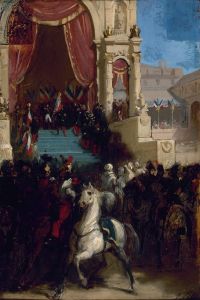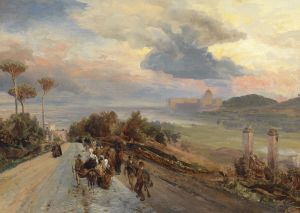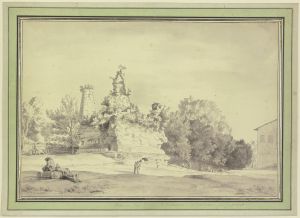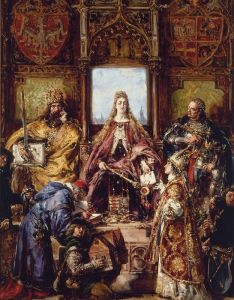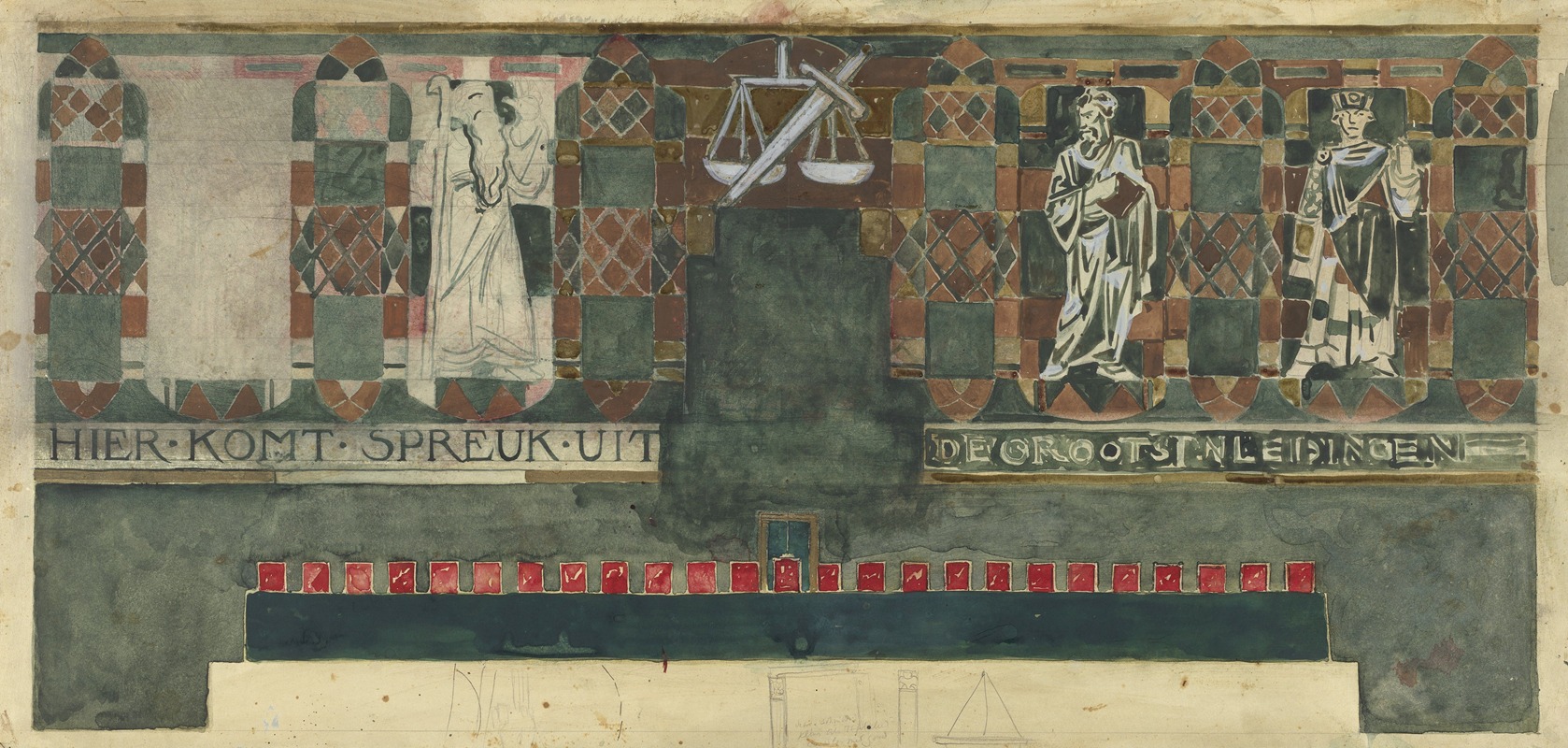
Vijfde ontwerp voor marmerdecoratie in de Hoge Raad te Den Haag
A hand-painted replica of Richard Nicolaüs Roland Holst’s masterpiece Vijfde ontwerp voor marmerdecoratie in de Hoge Raad te Den Haag, meticulously crafted by professional artists to capture the true essence of the original. Each piece is created with museum-quality canvas and rare mineral pigments, carefully painted by experienced artists with delicate brushstrokes and rich, layered colors to perfectly recreate the texture of the original artwork. Unlike machine-printed reproductions, this hand-painted version brings the painting to life, infused with the artist’s emotions and skill in every stroke. Whether for personal collection or home decoration, it instantly elevates the artistic atmosphere of any space.
Richard Nicolaüs Roland Holst (1868–1938) was a prominent Dutch artist and designer known for his contributions to the decorative arts, murals, and stained glass. One of his works, Vijfde ontwerp voor marmerdecoratie in de Hoge Raad te Den Haag (Fifth Design for Marble Decoration in the Supreme Court in The Hague), is a design created as part of his involvement in the artistic decoration of the Hoge Raad (Supreme Court) building in The Hague, Netherlands.
The artwork is a preparatory design, reflecting Roland Holst's vision for the marble decoration within the interior of the court. As a designer, Roland Holst was deeply influenced by the Arts and Crafts movement, which emphasized craftsmanship and the integration of art into everyday life. His work often featured symbolic and allegorical themes, and he was known for his meticulous attention to detail and harmonious compositions.
The Vijfde ontwerp is part of a series of designs Roland Holst created for the Hoge Raad, showcasing his process of refining and perfecting the decorative elements intended for the building. The design likely incorporates motifs and patterns that align with his broader artistic philosophy, which sought to create unity between architecture and decoration. While the specific details of this particular design are not widely documented, it is representative of Roland Holst's broader body of work, which often included stylized natural forms, geometric patterns, and a sense of rhythm and balance.
Roland Holst's contributions to the Hoge Raad project are part of his larger legacy in Dutch art and design. He was a key figure in the development of monumental art in the Netherlands during the late 19th and early 20th centuries. His work in various media, including murals, stained glass, and decorative designs, reflects his commitment to creating art that was both beautiful and meaningful.
The Vijfde ontwerp voor marmerdecoratie in de Hoge Raad te Den Haag is preserved as an example of Roland Holst's design process and his role in shaping the artistic identity of important public buildings in the Netherlands. It serves as a testament to his skill as a designer and his ability to integrate art into architectural spaces.





